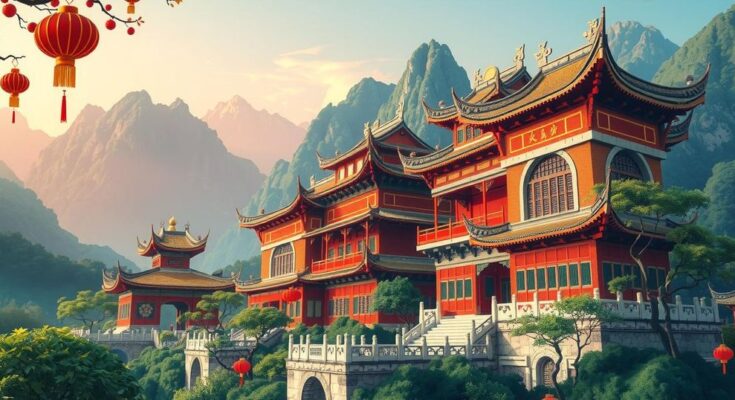Cultural Heritage and Tourism in Yunnan
China’s rich tapestry of cultural heritage is transforming tourism, particularly in Yunnan. According to reports, President Xi Jinping’s visit to the 500-year-old Simola Wa Village in January 2020 highlighted local customs like drum beating and rice cake making. This emphasis on heritage has fostered rural development and turned Simola into a flourishing tourist hub, benefitting its entire community—over 400,000 tourists visited in 2023, doubling locals’ per capita income to 22,000 yuan ($3,027).
The Success of Simola’s Tourism Model
The village successfully capitalizes on its ethnic culture to attract visitors after achieving poverty alleviation in 2019. Li Fashun’s restaurant, featuring traditional cuisine and interactive activities, thrives as local businesses flourish. This model illustrates how intertwining cultural tourism with local economies suggests a sustainable path forward for communities, offering visitors memorable and immersive experiences.
Preserving Heritage in Pingyao
In Shanxi Province, Pingyao stands as a testament to the connection between tourism and heritage preservation. In 2022, during a visit, President Xi explored its architectural wonders while stressing the importance of traditional crafts like lacquerware. Reports indicate that artisans like Wang Huiming are innovating to keep these crafts alive, ensuring cultural practices continue for future generations.
Pingyao’s Flourishing Tourism
Efforts to restore historic structures and improve infrastructure have greatly increased Pingyao’s appeal. The ancient city welcomed over 10 million visitors in 2024, generating 134 million yuan in ticket revenues—an impressive rise of 11.72% from the previous year. Travelers seeking an authentic experience of Chinese culture and craftsmanship will find much within Pingyao’s storied streets.
The Spring Festival: A Cultural Phenomenon
The Spring Festival, known for the world’s largest migration, emphasizes the cultural significance of travel in China. According to reports, millions return home for family reunions during this period. In January 2023, President Xi interacted with travelers at Zhengzhou East Station, underscoring the need for safety and efficiency amid the travel rush, where hubs accommodate over 23 million passengers over 40 days.
Global Insights from China’s Tourism Strategies
China’s approach melds cultural preservation and modern infrastructure, offering vital lessons to the global tourism sector. By merging heritage with innovative practices, countries worldwide can meet travelers’ increasing desire for cultural enrichment. The triumph of Simola’s cooperative tourism or Pingyao’s restoration initiatives showcases the potential of cultural tourism to foster sustainable economic growth.
China’s cultural heritage enriches tourism, particularly in Yunnan and Shanxi. Simola Wa Village saw a tourism surge post-poverty alleviation, boosting local income. Pingyao’s restoration has drawn millions, increasing ticket revenues. The Spring Festival exemplifies China’s travel traditions, offering insights into blending culture with modern infrastructure for global tourism growth.
China successfully intertwines cultural heritage and modern tourism, as illustrated by Simola Wa Village and Pingyao. These initiatives have significantly enhanced local economies while offering immersive experiences to visitors. The Spring Festival highlights China’s rich travel traditions, showcasing how heritage preservation can also cater to contemporary travel demands.
Original Source: www.travelandtourworld.com



